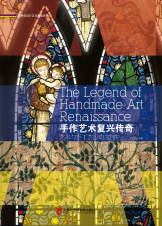
并列正书名: The Legend of Handmade Art Renaissance
主要责任者: 心安工作室
责任方式: 编著
出版者: 上海社会科学院出版社
出版地: 上海
字数: 100 千字
页码: 1-427
开本: 16
中图分类号: J509.1
语种:中
定价:178.00
出版时间:2020-01
丛书多卷书否:是
书目简介:本册工具书是跨世纪设计艺术潮流系列之一,共收录64条词条。
被引频次:2
- Neva,Battle of the
- Nevelson,Louise
- Nevers
- Neville,Richard
- Nevins,Allan
- New Amsterdam
- Newark
- Newark—on—Trent
- New Bedford
- Newbery,John
- New Britain
- New Britain
- New Brunswick
- New Brunswick,University of
- Newbury
- New Caledonia
- Newcastle
- Newcastle disease
- Newcastle—under—Lyme
- Newcastle—upon—Tyne
- Newcastle,Thomas Pelham—Holles,1st Duke of
- Newcastle,William Cavendish,Duke of
- New Church
- Newcombe,John
- Newcomb,Simon